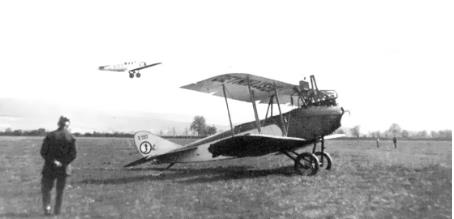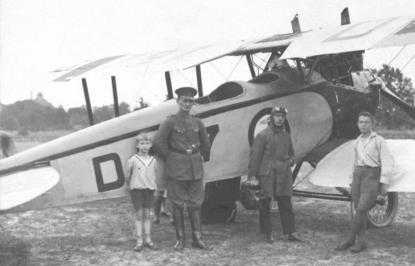| Type | |
| Engine | |
| Dimensions | Length , height , span , wing area , |
| Weights | Empty , loaded , max. take off weight |
| Performance | Max.. speed , cruising speed , range , endurance , service ceiling , climb |
| Type | Werk.Nr | Registration | History |
| W I , DFW C | 1 | D-199 | There is no information about when and where the Westfalenwerk acquired and converted this former DFW C V military double-decker, manufactured around 1917 by Deutsche Flugzeug-Werke GmbH in Leipzig. The original serial number of the machine was unknown. After the conversion it had the new type designation W I and probably the new serial number 1. A six-cylinder in-line Benz Bz IV engine (200/220 hp ). Since It was not possible to determine when the aircraft was certified as D-199. It can only be proven with certainty that the aircraft had been owned by Luftverkehr Coburg since at least July 1926, where it can also be proven until July 1927. |
| W I | 2 | D-593 | The origin of this earlier military aircraft, also manufactured in 1917 by Deutsche Flugzeug-Werke GmbH in Leipzig, lies in the dark. The Westfalenwerk acquired the cell in 1924 in a non-airworthy condition, rebuilt the machine and converted it for civilian purposes. A six-cylinder in-line Benz Bz IV engine (200/220 hp), engine no. 32304. After its completion in November 1924, the aircraft was given the new serial number 2, because the original number could no longer be determined. The Hüffer-Werke in Paderborn acquired the machine in May 1925, carried out the DVL acceptance test and arranged for it in the same month their approval for air traffic under the number D-593. In late October 1925 the aircraft was sold to the Fuhrken company , now with engine no. 34382. On November 3rd, 1925, Georg Jankowiak picked up the machine in Paderborn and transported it by air to Bad Oeynhausen. In the following three weeks, pilot Jankowiak made several flights with the D-593. For the month of December 1925, the flight log of the Bad Oeynhausen air station shows no flight movements of the machine. In January 1926, the D-593 made several sightseeing flights over Bad Oeynhausen and the surrounding area over two days. On February 27, 1926, the aircraft completed its DVL acceptance flight in Bad Oeynhausen and was approved for air traffic until March 1 Extended in 1927. In the months of March and April 1926, the DFW completed various sightseeing and special flights. on one Flight day in Kleve and then stayed on the road for a good week. to return from Cologne to Bad Oeynhausen. A flight day in Rinteln followed on April 18. Georg Jankowiak was always the pilot. After a last sightseeing flight on April 30, 1926, the D-593 was equipped with a spraying device for insect control, because the first order for spraying flights in the Magdeburg district had been received. On May 5th, Jankowiak started for Hörsingen (near Magdeburg), from there to take up the fight against the oak moth in the state forest of Bischofswald. The forest administration had entrusted the chemical company W. Güttler AG (now based in Hamburg) with this action, and the Siegfried Fuhrken company again acted as their aviation partner. Unfortunately, the use of the D-593 was short-lived, because on May 8, 1926, the machine suffered a total loss. The accident occurred about 1 km north of Eschenrode near Hörsingen i. Magdeburg in the oak forest "Hörsinger Forest". |
| W I, DFW C V | 3 | D-249 | The Westfalenwerk GmbH had rebuilt the aircraft in October / November 1924 and converted it for civil use. Engine, the usual six-cylinder in-line engine Benz Bz IV (200/220 hp ) was used. After completion, the aircraft had the new type designation Westfalenwerk W I and the new work number 3.In December 1924 the aviation company Siegfried Fuhrken bought the machine and had it transported by air from Münster to Bad Oeynhausen on December 22nd, 1924 with a special permit from the RVM. The special permit was necessary because the aircraft had never been officially certified before. After the DVL acceptance the W I Nr.3 was registered on April 15, 1925 as D-249 in the German aircraft register On May 22nd, the Bad Oeynhausen air station recorded a flight and two sightseeing flights, each with Jankowiak as pilot. The next information is from Pentecost Sunday, May 31st, 1925: The W I took part in a flight event in Bad Oeynhausen, performed a number of sightseeing flights and also served as a jumping-off point for the parachutist Kleineberg. On June 5, the D-249 flew to Naumburg / Saale and returned from there four days later. Jankowiak took the machine to Breslau to have a spraying system for calcium arsenate powder installed at the Mark steelworks. The forest scientist H. Krieg reported on this in a specialist journal in 1925:origin of this former DFW C V military machine (built in late 1918) is also unknown. .After installing the sprinkler system, Jankowiak began pollination flights against the Forleule and Nun on June 28th in the Lübben forest (Niederlausitz), and from July 8th he continued the flights in the area of the Regenthin Forest District (Arnswalde district, Prov. Brandenburg). A total of 23,570 kg of poison powder from the Güttler “Silesia” brand was scattered over an area of over 1,000 hectares. The mission was completed on July 17, 1926. Then the D-249 was transported to the Stahlwerk Mark AG, Breslau and underwent a thorough overhaul, then it was followed by the railway to Geisenfeld (Upper Bavaria) where the next spraying action in the local forest was due. After the plane was reassembled and had completed two smooth test flights, there was one serious accident on the afternoon of October 5, 1925 of the D-249. |
| W I, LVG C VI | 4 | D-789, D- 797 | When and from whom Westfalenwerk GmbH bought this LVG C VI cell in need of overhaul is also available no information. The original serial number of the machine was also unknown here, in coordination with DVL and RVM the aircraft got the new serial number W I Nr.4. The standard Benz Bz IV engine served as the drive (200/220 PS, 147/162 kW), with engine number 34165. In the last days of June 1925 the Siegfried Fuhrken company bought the biplane, which was still being overhauled it was loaded on July 1, 1925 and transported overland from Münster to Bad Oeynhausen. The overhaul of the machine was completed in the Fuhrken workshops. With the date 9/14/1925 the aircraft received under the number D-789 the official approval for air traffic. At the end of October 1925 the license plate was changed to D-797. and the flight began on August 24th. With the LVG was flown various sightseeing and photo flights over Bad Oeynhausen and the surrounding area, on September 20th the machine took off participated in a flight day in Petershagen (Weser). Georg Jankowiak was at the wheel in all cases. On October 18, 1925, the D-789 had to make an emergency landing during a sightseeing flight on the Oeynhausen square, but it went smoothly A week later there was an unexpected correction of the license plate: The approval for air traffic was first has been documented by a telegram from the RVM, but as now the official written registration certificate from Berlin arrived, it turned out that the entry number in the telegram was incorrect - instead of D-789 the correct number was D-797. The machine was equipped with a spraying device for insect control: a wooden one was placed in the passenger compartment Built-in container for the grit (capacity approx. 140 kg). After opening a slide in the bottom of the container fell poison powder on a roof-shaped iron sheet and was distributed on both sides. By raising or lowering this sheet metal, the emptying speed and dust distribution can be regulated to a certain extent. In November 1926 the LVG C VI D-797 changed hands: Georg Jankowiak, pilot for the last 14 months, bought “his” machine and wanted to start his own business with it. Noteworthy in the report of the Bad Oeynhausen air station from November 17, 1926 is the reference that the machine is now stationed in Kassel. The D-797 was mentioned for the last time in June 1927 in connection with Siegfried Fuhrken and Bad Oeynhausen: Georg Jankowiak intended to found his own aviation company in Bad Oeynhausen and made use of the "temporary help" of Siegfried Fuhrken, while he was the owner of the two Jankowiak aircraft - including the LVG C VI D-797 - until Jankowiak was officially approved as an aviation company. |



